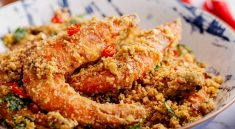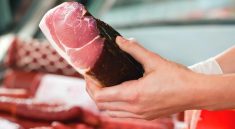The sight of a chef in full uniform commands respect and admiration. But have you ever stopped to ponder what each element of the chef uniforms represents? In this article, we will break down the symbolism behind each component of the chef’s attire.
The Chef’s Coat
Traditionally, the chef’s coat is made of thick, white fabric. It serves a dual purpose: first, the thickness of the material protects the chef from the heat of the kitchen, and second, the white colour symbolizes cleanliness and purity. The double-breasted coat design allows the chef to reverse it and hide any spills or stains that might have occurred during the cooking process.
- Knot Buttons: The coat’s knot buttons are more than just a design element. They are designed to be easily removed and replaced, allowing quick cleaning and maintenance. This design element harks back to when chefs would have to quickly change in and out of their coats in busy kitchens.
- Long Sleeves: The skin’s long sleeves protect the chef’s arms from burns and cuts. Some modern chef coats have short sleeves for comfort, but traditional coats always have long sleeves.
The Chef’s Pants
The design of the chef’s pants also carries significant symbolism. They are typically loose and baggy, allowing for movement and ventilation in the hot kitchen.
- Checkered Pattern: Many chef’s pants feature a black and white checkered pattern. This design helps to camouflage minor spills and stains, allowing the chef to maintain a professional appearance throughout their shift.
- Elastic or Drawstring Waist: An elastic or drawstring waist is standard for chef’s pants. It allows for comfort and flexibility during long hours in the kitchen.
The Chef’s Apron
The apron is the most practical element of the chef uniforms. It protects the chef’s clothes from spills and splatters and can be easily removed and cleaned. However, it is also symbolic of the hard work and dedication that goes into the culinary arts.
The Chef’s Hat (Toque)
The chef’s hat, or toque, is arguably the most iconic part of the chef’s uniform. The height of the hat is said to signify the rank or experience of the chef – the taller the hat, the more experienced the chef. The pleats in the hat were traditionally said to represent the number of ways the chef could cook an egg, with some hats having up to 100 wrinkles.
The Neckerchief
While not as common in modern kitchens, the neckerchief is a traditional part of the chef’s uniform. Initially, it was used to wipe sweat from the chef’s brow, but today it is often worn as a nod to tradition and to add a touch of style to the uniform.
In Conclusion
Each element of the chef’s uniform serves a practical purpose and carries symbolic meaning. From the protective coat to the iconic hat, these uniforms identify someone as a chef and reflect the tradition, skill, and dedication that go into the culinary arts.





